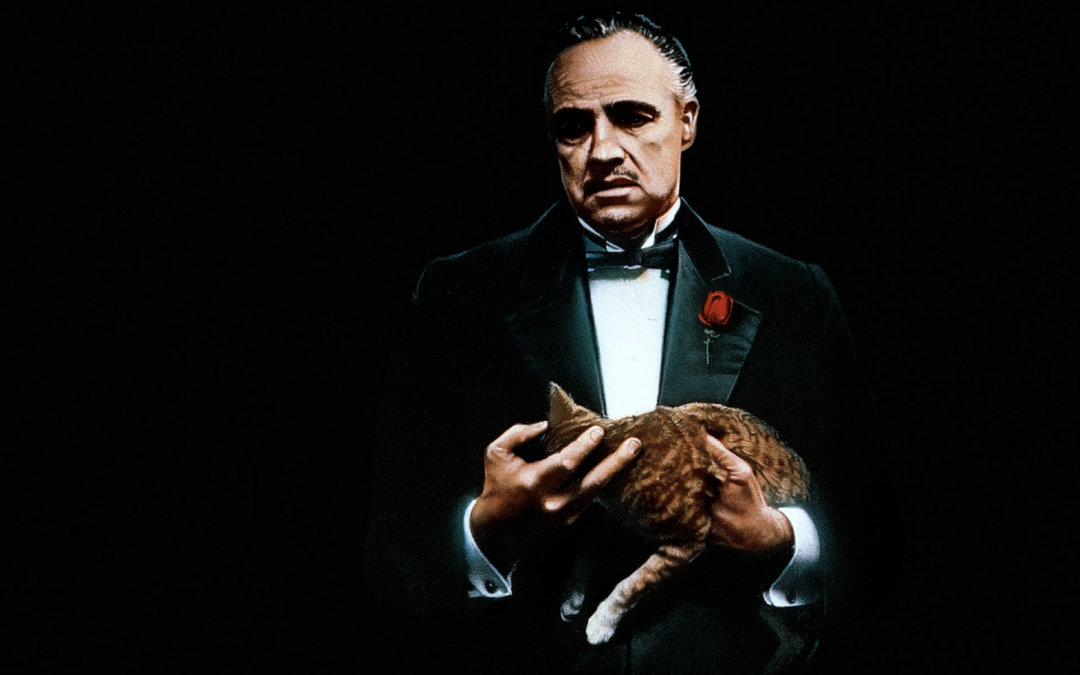
by Robyn Bolton | Jan 16, 2023 | Innovation, Leadership, Strategy
You know that innovation is something new that creates value.
(But not too new)
Sometimes the value can be hard to describe, let alone quantify. You know that, ultimately, the value needs to be financial – more revenue, lower costs, higher profit. You also know that the value created in the short term will likely be more intangible – increased satisfaction, improved brand perception, and greater loyalty.
Your challenge, especially in tough economic times, is to tell a story that connects success indicators seen in the short term to the financial returns realized in the long term and maintain support and funding as the story unfolds.
That is a HUGE challenge! One that overwhelms most managers because they don’t know where to start let alone how to maintain support and momentum.
But you are not “most managers.” You know that the best place to start is at the beginning.
What is the Goal of Innovation (i.e., why are we investing in this)?
Goal #1: Create (or keep) a competitive advantage
Innovation is essential because it keeps you ahead of the competition.
Your business is already a leader in something that creates a competitive advantage, and your innovation efforts focus on keeping it that way.
For example, imagine you’re the President of Big Machine Co (BMC). You’ve been in business for decades in an industry with commoditized products, few competitors, high barriers to entry, and medium barriers to switching (i.e., it can be done, but it’s a pain).
You know that customer relationships and loyalty are the fuel that drives your business and why you’re #1 in the market. As a result, you focus your innovation efforts on creating new products or services that deliver unique value to your customers and provide easy and fast resolution to service issues.
Goal #2: Avoid (or overcome) competitive disadvantage
Innovation is essential because it keeps your business alive.
Your business is falling behind the competition either because you’re not keeping up with their pace of innovation or because you’re failing to deliver on table stakes like quality, price, or accessibility. You invest in innovation to catch up to the competition or regain your place in customers’ consideration.
Let’s go back to Big Machine Co. Because of the amazing growth you achieved as President, you’re now CEO (congrats!). The new President continued your innovation strategy but got so excited by everything new he forgot to pay attention to the “old” things – existing products, manufacturing capabilities, and people. Now, you’re #2 in the market and losing customers at a concerning rate.
It’s time to get back to basics and invest in “new to BMC” innovations by creating products that customers want and competition can already offer, investing in manufacturing equipment and processes that improve efficiency and quality, and retaining people who have the knowledge, experience, and relationships that are the heart of the business.
Goal #3: Build a reputation for being innovative
Innovation is essential because doing it makes the company look good (and executives and shareholders feel good), regardless of whether it produces results.
Your business demands innovation, new news, and big splashes. Your customers want novelty, not perfection. Image is everything, and perception is reality. You invest in innovation to show what’s possible, provoke conversation, and stay in the spotlight.
Believe it or not, this is on your mind as CEO of Big Machine Co. Your customers demand perfection, not novelty, but they need to shed the perception that they’re boring companies in a boring industry moving at a glacial pace to attract and retain the next generation of talent. You can help.
You look beyond the market to identify trends and technologies in the news but not yet in your industry. You identify the ones that could transform industries and make your customers’ eyes light up with wonder and excitement. You create proof of concept prototypes that make the vision tangible and discuss the plan and timing of the first step toward that vision.
How to Goal Helps
Your reason for innovating informs everything else – your strategy, structure, activities, metrics, and governance.
That is why you can only have one Why at a time.
Yes, it’s tempting to try to do a bit of everything, but that often results in achieving nothing.
Think back to Big Machine Co:
- If the products break, don’t perform as they should, or aren’t available when needed, it doesn’t matter how excellent the customer service is or how cool the new products are. You must achieve Goal #2 (avoid or overcome competitive disadvantage) to earn the right to pursue Goal #1 (create or maintain competitive advantage)
- If the products are the right quality, perform as expected, and arrive on time but the customer service is poor, and there are no new products, it’s hard to believe that a company that struggles to deliver incremental innovation can deliver on a radically innovative vision. You must make progress against Goal #1 to have permission to pursue Goal #3 (build a reputation).
The next time you face the challenge of connecting your innovation’s short-term success indicators to the long-term financial returns and maintaining support and funding, don’t be overwhelmed.
Go back to the beginning and explain, “It achieves (Goal #) so that we earn the right to invest in (Goal #).”

by Robyn Bolton | Jan 10, 2023 | Innovation, Tips, Tricks, & Tools
What happened the last time you asked your team for ideas?
A. Nothing. Nada. Zip. Zilch.
B. Got some ideas but nothing new or noteworthy
C. Got lots of ideas, but very few were relevant, new, or big
D. The clouds parted. The angels sang. The Ideas forever transformed our business.
My guess is you answered A, B, or C
(If you answered D, let me know because I need to learn how you did it).
While there are dozens of reasons why D did not happen, the most common one is this:
You asked for ideas.
You said, “Hey, I want to hear your ideas.”
Or maybe you got more specific and said, “I want to hear your ideas about how we can do better.”
What your team heard was “Hey, I want to hear your ideas as long as they’re the ideas I want to hear and pertain to the topics I want to hear about, but I’m not going to tell you the topics, so share at your own risk and may the odds be ever in your favor.”
So your team stayed quiet.
Good news, you can turn the odds in your favor if you do this ONE thing:
Give them constraints.
It seems counterintuitive.
After all, shouldn’t creativity be unconstrained?
Isn’t ideation all about blue sky crazy thinking?
Doesn’t innovation require us to unshackle ourselves from what is practical and dream of what’s possible?
No. No. No.
Constraints fuel creativity
You don’t have infinite money, people, or time. *
Which means you have constraints.
Don’t run from that fact. Don’t hide from it. Don’t ignore it,
Embrace it because it is what fuels creation, innovation, and growth.
No one knew that better than Orson Welles (and he was a pretty creative guy)
“The enemy of art is the absence of limitations, ” he told filmmaker Henry Jaglom. “Economically and creatively, that’s the most important advice you can be given. You have limitations; you don’t have $ 1 million to blow up that bridge, so you have to create something else on film to produce the same effect. Instead of having money to hire hundreds of extras, you have to sneak a cameraman in a wheelchair through the streets of New York City and steal the shot, which gives you a look of much greater reality.”
If constraints can create Citizen Kane, imagine what they can do for your business.
Constraints demand focus
Think about the last movie you saw that was way too long. Or the book that could have been an article. Or the meeting that should have been an email.
When you have all the money, time, or resources you need, you can do anything and try to do everything. Unfortunately, the result is usually a bloated confusing mess that leaves your customers feeling like they’ve lost more than they gained.
But when you only have 2 hours or 300 pages to tell a story, 20 minutes instead of four hours for a presentation, or $10,000 to create a new product, you get crystal clear on what you’re trying to accomplish, prioritize what you need, and leave everything else behind.
Constraints cause tension which leads to choices
In The Offer, a fantastic series about the making of The Godfather, there’s a great scene in which the studio executive demands that Francis Ford Coppola cut 45 minutes from the film (and helpfully suggests cutting all the scenes set in Sicily). The reason? So that theaters can host five showings per day instead of four.
Two hours is a constraint.
Sicily is where Michael abandons all hope of a normal life.
The tension between revenue and story, business and art, is real.
Tension requires you to make choices. Constraints shouldn’t always win. But they should always be present.
Constraints create value
The next time you ask for ideas sprinkle in some constraints.
- “I’d like your ideas for how we can use existing assets to expand into new markets.”
- “How can we earn more money from existing customers without raising prices?”
- “What can we stop doing so we can focus on high-priority work and avoid burnout?”
You’ll find that adding a few constraints to your request for ideas will be an offer your team can’t refuse.
*If you do have unlimited people, money, and time, please let me know. I’d love to talk to you.

by Robyn Bolton | Jan 3, 2023 | Innovation, Leadership, Strategy
Everyone is an innovator on January 1.
That’s the day when each of us resolves to do something new that creates value.
- Start working out so I lose weight, look better, and feel healthier.
- Stop smoking, so I live longer.
- Turn off my computer and phone at 6:00 pm so I focus on family.
Only 20% of people are innovators on February 1. The rest of us gave up our resolutions and decided to keep doing the same things that create (good enough) value.
Your business is no different.
At the start of the fiscal year, you resolve to innovate!
- Explore new offerings, customers, and business models
- Experiment with new ways to get things done
- Enter new markets
Then something goes wrong, and you divert some people (not everyone!) from innovating to fixing an operational problem.
Then the first quarter starts coming in below expectations, and you cut budgets to stay on track to deliver the bottom line.
Then something else happens, and something else, and something else, and soon it’s “February 1,” and, for excellent and logical reasons, you give up your resolution to innovate and focus all your resources on operating and hitting your KPIs.
Resolve to Revive.
Innovation is something NEW that creates value.
New is hard. It’s difficult to start something new, and it’s challenging to continue doing it when things inevitably go awry. Investing in something uncertain is risky, primarily when more “certain” investment opportunities exist. It’s why New Year’s resolutions and Innovation strategies don’t stick.
Revival is the creation of new value from OLD.
When you work on Revival, you go back to the old things, the things you explored, tried, implemented, or even launched years ago that didn’t work then but could create more value than anything you’re doing today.
Your business is filled with Revival opportunities.
How to Reveal Revivals
Ask, “What did we do before…?”
Everything we do now – research, development, marketing, sales, communication, M&A – was done before smartphones, laptops, desktops, and even mainframes. Often new technology makes our work easier or more efficient. But sometimes, it just creates work and bad habits.
If you are trying to make Zoom/Teams calls less exhausting and more productive, try to remember meetings before Zoom/Teams. They were conference calls. So, next time you need to meet, revive and schedule a phone conference (or a cameras-off Zoom/Teams call).
Find the failures
Most companies are highly skilled at hiding any evidence of failure. But the memories and stories live on in the people who worked on them. Talk to them, and you may discover a blockbuster idea that failed for reasons you can quickly address.
Like Post-It Notes.
While some parts of the Post-Its story are true – the adhesive was discovered by accident and first used to bookmark pages in a hymnal, most people don’t know that 10 YEARS passed between hymnal use and market success. In that decade, the project was shelved twice, failed in a test market, and given away as free samples before it became successful.
Resurrect the Dead
The decision to exit a market or discontinue a product is never easy or done lightly. And once management makes the decision, people operate under the assumption that the company should never consider returning. But that belief can sometimes be wrong.
Consider Yuengling, America’s oldest brewery and one of its old ice cream shops.
In 1829, David G. Yuengling founded Eagle Brewing in Pottsville, PA. The business did well until, you guessed it, Prohibition. In 1920, D.G. Yuengling & Sons (formerly Eagle Brewing) built a plant across the street from their brewery and began producing ice cream. When Prohibition ends, brewing restarts, and ice cream production continues. Until 1985, when a new generation takes the helm at Yuengling and, under the guise of operational efficiency and business optimization, shut down the ice cream business to focus on beer. TWENTY-NINE YEARS later, executives looking for growth opportunities remembered the ice cream business and re-launched the product to overwhelming customer demand.
Just because you need growth doesn’t mean you need New.
Innovation is something new that creates value. But it doesn’t have to be new to the world.
Tremendous value can be created and captured by doing old things in new ways, markets, or eras.
After all, everything old is new again.

by Robyn Bolton | Dec 14, 2022 | Innovation, Tips, Tricks, & Tools
Congratulations! You developed and are using a best-in-class Innovation Process.
You start by talking to consumers, studying mega-trends, and scanning the globe for emerging technologies and disruptive offerings.
Once you find a problem and fall in love with it, you start dreaming and designing possible solutions. You imagine what could be, focused on creating as many ideas as possible. Then you shift to quality, prioritizing ideas that fit the company’s strategy and are potentially desirable, viable, and feasible.
With prioritized ideas in hand, you start iterating, an ongoing cycle of prototyping and testing until you confidently home in on a solution that consumers desire, is technically feasible, and financially viable.
But you don’t stop there! You know that ideas are easily copied by innovative business models are the source of lasting competitive advantage, so you think broadly and identify financial, operational, and strategic assumptions before testing each one like the innovation scientist you are.
If (and when) a solution survives all the phases and stage gates and emerges triumphant from the narrow end of the innovation process, there is a grand celebration. Because now, finally, it is ready to go to market and delight customers.
Right?
Wrong.
The solution’s journey has only just begun.
What lies ahead can be far more threatening and destructive than what lies behind.
Unless you planned for it by including these three steps in your innovation process.
Partnership with Sales
During testing, you ask consumers to give feedback on solutions. But do you ask Sales?
Salespeople spend most of their time outside the office and in stores, talking to customers (e.g., retailers, procurement), consumers, and users. They see and hear what competitors are doing, what is working, and what isn’t. And they will share all of this with you if you ask.
When I ask why innovation processes don’t include Sales, I hear two things (1) “it’s too early to talk to Sales” and (2) “they always tell us the same thing – it’s too expensive.”
First, if you have a concept (or two or three) with a 50/50 shot of going to market, call a few Salespeople and ask for their reactions. Nothing formal, no meeting required—just a gut reaction. And once you get that, ask when they’d like to talk again because their perspective is essential.
Second, “too expensive” should never be the end of the conversation. It’s one piece of feedback, ask follow-up questions to understand why it’s too expensive, then ask, “What else?” There’s always more, and some of it is useful. Plus, better to hear it now than months or years from now at the launch announcement.
Relay with Operations
Most companies have a process between the end of the innovation process and shipping the new offering. It’s where sourcing, manufacturing, shipping, inventory management, contracting, and many other crucial and practical decisions and plans are made.
Also, at most companies, the “transition” from the innovation process to the operational process is akin to chucking something over a wall. “Here you go,” Innovation seems to say, “we proved this will be a big business. Now go make it happen!”
Unfortunately, Supply Chain, Manufacturing, and everyone else affected usually stand on the other side of the wall, solution in hand, mouth agape, eyes wide, thinking, “Huh?”
Instead of an abrupt hand-off, the Innovation Process needs to identify when the relay-style hand-off starts, and Innovation and Operations run side-by-side, developing, adjusting, and honing the solution.
Hand-off to the Core Business
The hand-off to the Core Business is the most precarious of all moments for an innovation. The moment it leaves the Innovation team’s warm, nurturing, and forgiving nest and moves into the performance-driven reality of the Core Business.
The Core Business knows why it was added to the P&L, but they don’t understand how it came to be or why it is the way it is. And they definitely don’t love it as much as you do. All they see is a tiny, odd thing that requires lots of their already scarce resources to become something worthwhile.
Instead of depositing beloved solutions on the Core Business’ doorstep like an unwanted orphan, Innovation Process should ensure that the following three questions are answered and aligned to well before the hand-off occurs.
- How material (revenue, profit) does a solution need to be to be welcomed into the Core Business?
- Who runs the new business, and what else is on their plate?
- What mechanisms are in place to ensure the Core Business supports the new solution during its tenuous first 1-3 years?
Create a process that creates innovation
Invention is something new.
Innovation is something new that creates value.
Innovation processes that focus solely on defining, designing, developing, and de-risking a solution run the risk of being Invention process because they result in something new but stop short of outlining how the innovation will be produced at scale, launched, scaled, and supported for years to come. You know, all those things required to create value.
BTW:
- 99.7% isn’t an exact number. In my experience, it’s 100%. But I wanted to leave some wiggle room.
- I am 100% guilty of forgetting these three things.
- If you’re trying to innovate for the first time in a loooooooong time, it’s ok to focus on the front end of innovation (define, design, develop, de-risk) and tackle these three things later. But trust me, you will need to tackle them later.

by Robyn Bolton | Nov 30, 2022 | Innovation, Leadership, Strategy
“What business are you in?”
How do you answer this all-too-common question?
Do you name the company you work for?
The industry you’re in?
The function you perform?
Bad news, your business isn’t defined by the company, the industry, and even your function.
Good news, the business you’re in is defined by your customers.
And their definition unlocks incredible potential for innovation and growth.
The 2:00 am Answer
In my first few months as an Assistant Brand Manager at P&G, I had a truly terrifying experience. Sitting in a training session, a senior executive locked eyes with me and asked, “What is Brand Equity?”
My first thought was, “you tell me, buddy. I’m the newbie here.” My second thought, and the one that came out of my mouth, was probably something straight out of a marketing textbook.
“Wrong!” he exclaimed. “Brand equity is what a consumer says if you wake them up from a dead sleep at 2:00 am and scream ‘What is [brand]?’ in their face.”
I don’t know what scared me more, being yelled at for being wrong or the idea that breaking and entering and screaming brand names at unsuspecting sleepers was suddenly part of my job description.
The 2:00 am Answer is the business you’re in
The 2:00 am answer applies to more than just brand equity.
It reveals the business you’re in.
Because it’s the Job to be Done your customers hire you to do
As the training went on, we learned how this mantra manifests in everything a brand (or company) does – its products, pricing, packaging, distribution, and marketing.
For example, if the most important thing to you about laundry is that clothes come out of the washing machine clean, you have dozens of options and probably buy the cheapest one.
But, if you want to be sure that clothes will be immaculate after the first wash because you know your kids will wear anything, even if it has stains, which will lead the other parents to judge you, you have one option – Tide.
Why the 2:00 am Answer matters
The 2:00 am Answer also defines where you have a right to play and to win.
Sometimes this space is bigger than you expect, revealing incredible opportunities for innovation and growth.
Sometimes it’s smaller than you want, exposing a strategic misalignment between what you offer and what your customers want. This happened to LEGO and took the company to the brink of bankruptcy.
In 1998, LEGO posted its first loss in company history. To reinvigorate growth, it shifted from being in the business of Toys to being in the business of Play. This led to two decisions that, while strategically aligned with Play, almost bankrupted the company. First was the introduction of new toys specifically designed to be built in less than 10 minutes so kids could start playing quickly. The second decision took LEGO into other aspects of play – video games, amusement parks, and a TV show supported by a line of action figures.
In 2003, LEGO reported a $238M loss, and with only one profitable product line, the future was bleak. So, LEGO started talking to customers (though probably not at 2:00 am). Through the conversations, LEGO learned that its expansion into all forms of play and the prioritization of Play over creation (building) wasn’t LEGO-y in the minds of consumers. So they rejected the new offerings. Instead, people loved LEGO because it offered “creative play” – the freedom and ability to turn ideas into tangible and interactive 3D models.
LEGO listened and went “back to the brick.” The results speak for themselves. In 2015, LEGO overtook Ferrari to become the world’s most powerful brand. In 2021, LEGO earned $8.06B in revenue, a 27% increase from the prior year.
How to get and use the 2:00 am Answer (without committing a felony)
First, get clear on the business you WANT to be in. Ask yourself and your colleagues, what do we want our customers to hire us to do? Push beyond the easy and obvious answers (usually functional Jobs to be Done). How do you want customers to feel after hiring your company (emotional Jobs to be Done)? How do you want them to be perceived (social Jobs to be Done)? What Job to be Done do you want to do uniquely well?
Second, talk to your customers one-on-one at a time and place of their choosing. Ask them why they hire your business. Again, push beyond the easy and obvious answers to understand what they want to feel and be perceived after choosing you. Ask what other options they considered and why they hired your business.
Find and close the gap. What’s the difference between what you wanted to hear and what you actually heard? If the gap is bigger than expected, how can you expand and innovate your business to grow into all the Jobs people want to hire you to do? If the gap is smaller, how can you shift or redirect efforts to grow in ways where you have permission to operate?
The 2:00 am Answer can be the key to defining, growing, and transforming your business.
Who says nothing good happens after midnight?

by Robyn Bolton | Nov 17, 2022 | Innovation, Just for Fun
You know ALL the innovation tools and frameworks:
- Design Thinking
- Lean Startup
- Disruptive Innovation
But knowing and doing are two different things. When I first learned Jobs to be Done, it felt painfully obvious, exactly like the customer research I did for five years at P&G. Then I had to do it (conduct a Jobs to be Done interview), and it was difficult (ok, it was a disaster).
And teaching others to do it is a third entirely different thing. Because by the time you have the skills and expertise to teach others, you’ve forgotten what it was like to start from the beginning.
It’s easy to forget that before you can read a sentence, you must know how to read a word. Before you can read a word, you must recognize a letter.
So let’s go back to basics. Back before the methodologies. Before the frameworks. Before the theories. Let’s go back to the letters and words that are Innovation’s essence.
Let’s go back to the Innovation Alphabet.
Assumptions, every innovation has them, and every innovator tests them to reduce risk
Brainstorming, a great way to get lots of ideas and maybe even some new ones
Customers, the people we innovate for
Disruptive Innovation, cheaper, lower quality products that appeal to non-consumers
Experiments, how you test assumptions and reduce risk
Fun, what innovation should be
G
Hope, it springs eternal in the heart of every innovator
Ideas, where most innovations start
Jobs to be Done, the problems people have/the progress they want to make (and the hill I will die on)
K
Leadership, the most crucial element in innovation (and often the biggest barrier)
Mistakes, how we learn, grow, and make progress
No, the start of a conversation, not the end
Opportunities, a nice term for “problem”
Problems, where all innovations should start
Quiet, what we sometimes need to think big and create something new
R
S
Team, how innovation gets done
Uncomfortable, what innovation should make you (especially if you’re a senior executive)
V
W
X
whY, the one question you can never ask enough
Zzzz, what you finally get to do when you’ve changed the world
As you can see, some letters still need words. What should they be?
Are there better words for some letters?
Let me know in the comments!





